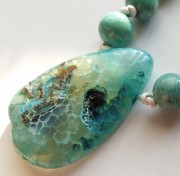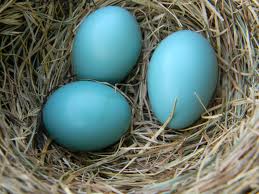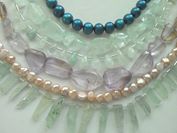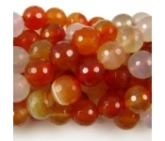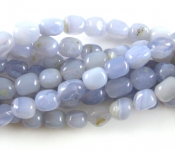When I first decided to buy a jewllery making starter box two years ago, I started off by using glass beads. Nothing wrong with glass beads, but I moved on to semi-precious gems as my confidence to make items that wouldn’t fall apart grew.
I’ve taken an interest in where my gems come from, whether they have been coloured or heat treated and whether they are genuine. And genuine they have to be for me to say that to the people who buy my pieces.
Take these two bracelets. One is hand made (by me) – genuine turquoise stone bought from a reputable supplier; the other I bought from a local shop with a tag on it stating ‘Turquoise. Healing. £1.99.’ Can you guess which one is which? When I started out I couldn’t – but now I read up on a particular gem before I buy to try and make as sure as possible that it is what it says it is.
I’m far from being an expert, mind you! Gemologists are the people who can really confirm a true gemstone by using a number of techniques e.g. heating, which shows up the presence of oils or dyes.
The turquoise on the left is for real. The veining is quite heavy in places and highly irregular. The colour isn’t ‘bright’ blue like the one on the right which is not genuine turquoise. In fact it’s Howlite which, in its natural state, is white and has been dyed to look like turquoise. How do I know? The veining is a very pale grey and the colour is bright blue. The colour of natural turquoise is similar to the American Robin’s egg which is generally a softer blue/green hue.
Why am I telling you all this? Because when you buy so called ‘fashion jewellery’ for £1.99, you really do get what you pay for – nothing wrong buying ‘fashion jewellery’, just be aware it may well not be what you think it is.
